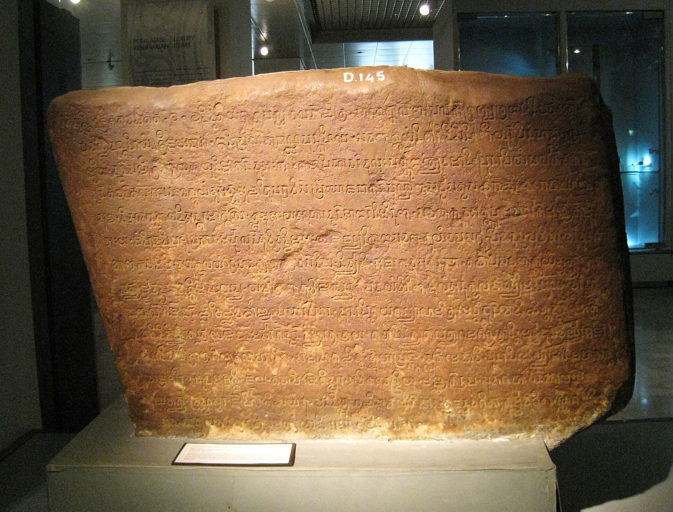- Indonesia’s South Sumatra is an epicenter of the annual peat fires that ravage the archipelago country.
- The province has become a staging ground for projects like KELOLA Sendang, which is intended to promote sustainable landscape management in an important tiger habitat.
- More than a millennium ago, the ruler of the Srivijaya kingdom put forth his own vision for sustainable prosperity — one of which today’s policymakers could take heed.
Citizens of Indonesia and the world today can feel the impact of two centuries of unsustainable exploitation of nature.
But few have associated problems like climate change, mass extinction and food crisis with threats facing what traces remain of this archipelago’s great and ancient civilizations.
The destruction of South Sumatra’s vast peat swamp zones, for example, a result of illegal logging, mining, fires and land-use change, damages not only the ecological but also the cultural landscape of communities in the area of the former Srivijaya kingdom, which in the past treated peatlands more sustainably.
Even if ecosystems are restored, if a culture of exploitation persists the destruction of nature will recur.
South Sumatra’s local governments have pioneered sustainable landscape management. Take the KELOLA Sendang project, a partnership with the Zoological Society of London. The project involves a variety of stakeholders, from local communities and environmental groups to entrepreneurs and bureaucrats.
In Urban Space (1979), Rob Krier writes that a landscape is a comprehensive system with biotic and abiotic components, including human influence. It concerns not just arrangements of plants, animals, spatial planning and infrastructure maintenance, but also the human relationship with nature and culture.

Culture-based development
The question is, how can sustainable landscape management work as one with cultural revitalization, rooted in the culture that already exists in South Sumatra?
Take a look at history. In 684 Sri Jayanasa, the first king of Srivijaya, oversaw the creation of the Talang Tuwo inscription, which offers a philosophy of landscape management.
The inscription tells of the establishment of the sacred Sriksetra park. It regulates plant management and water governance, such as the construction of dams and ponds.
The inscription puts forth several values. First, the establishment of a zone with the symbol of Sriksetra park intended for all creatures. Second, the area meets the food and shelter needs of all beings. Third, all living beings are healthy and protected from disease. Fourth, they live in peace. Fifth, human hearts are noble and intelligent.
In the author’s view, what is meant by “park” differs from how we conceive of the term today. It rather refers to a forest area, planted with a variety of crops, such as areca, coconut, palm, bamboo, corn and more, as a source of food for all living beings, whether settled in the area or not.
The king envisions the park as culminating human civilization, providing a space for life that is healthy, peaceful, intelligent and good in this world and the hereafter.
The inscription not only regulates plants, animals and water but views humans as holistically integrated into the local ecosystem.

The human spirit of Talang Tuwo
An important element in any sustainable landscape program is the building of awareness of the people who are involved in it, from communities and activists to entrepreneurs and bureaucrats — exactly as mentioned in the Talang Tuwo inscription.
These values must be delivered to those involved in South Sumatra’s landscape projects.
In order to realize the human development of Talang Tuwo, the first step is to build the commitment of various parties. Second, mapping and socialization. Third, education, both formal and informal. Fourth, the establishment of legal policy in the landscape zone. Fifth, monitoring.
Several areas of South Sumatra have the potential to become models for sustainable landscape management that arises from culture, with a view toward ethnicity, tradition, art, language, historical artifacts. Besides the Sendang landscape, there are the landscapes of Pasemah, Semende, Rawas, Benakat, Danau Ranau, Komering, Tulungselapan, Mesuji, Air Sugihan, Sendang, Musi and Palembang.
Hopefully, the aspiration of the Srivijayan king 1,400 years ago and the vision of policymakers today can be realized in order to bring about sustainable prosperity.
This piece was first published on Mongabay’s Indonesian sister site on Feb. 27, 2017.